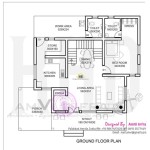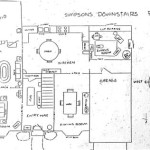How to Plan to Build a House: A Comprehensive Guide
Building a house is a significant undertaking, demanding meticulous planning and execution. A successful project necessitates careful consideration of numerous factors, from initial budget allocation to final landscaping. This article provides a comprehensive guide on how to plan a house build, outlining essential steps and considerations to navigate the process effectively.
Defining Your Needs and Wants
Before engaging with architects or contractors, a clear understanding of your needs and wants is paramount. This involves a thorough assessment of your lifestyle, family requirements, and long-term goals. Consider the following aspects:
Size and Layout: Determine the appropriate square footage based on the number of occupants and their spatial requirements. Think about the number of bedrooms and bathrooms, living areas, and functional spaces like home offices or hobby rooms. Consider future needs, such as accommodating aging parents or future children.
Style and Design: Research different architectural styles and identify preferences for interior design elements. Consider factors like natural light, open-concept living, and accessibility. Explore online resources, magazines, and homes in your area for inspiration.
Functionality and Features: Prioritize essential features based on your lifestyle. This may include features such as a large kitchen, a home theater, a dedicated workspace, or energy-efficient appliances. Consider the importance of outdoor living spaces, such as patios, decks, or gardens.
Accessibility and Universal Design: If applicable, consider incorporating universal design principles to ensure the house is accessible to individuals of all ages and abilities. This may involve features like wider doorways, ramps, and grab bars in bathrooms.
By clearly defining your needs and wants, you establish a solid foundation for the planning process, guiding design decisions and ensuring the final product meets your specific requirements.
Establishing a Realistic Budget and Securing Financing
One of the most crucial aspects of planning a house build is establishing a realistic budget. This involves not only estimating construction costs but also accounting for various associated expenses. Failure to create a comprehensive budget can lead to financial difficulties and project delays.
Estimating Construction Costs: Research local construction costs per square foot. Obtain quotes from multiple contractors for various aspects of the project, including materials, labor, and permits. Factor in potential cost overruns, typically allocating 10-20% of the budget for unexpected expenses.
Accounting for Soft Costs: Soft costs encompass expenses beyond direct construction costs, such as architectural fees, engineering fees, permit fees, inspection fees, and insurance costs. These costs can represent a significant portion of the overall budget and should not be overlooked.
Securing Financing: Explore different financing options, such as construction loans, mortgages, and personal savings. Compare interest rates, loan terms, and eligibility requirements from various lenders. Obtain pre-approval for a loan to understand your borrowing capacity.
Contingency Planning: Allocate a contingency fund to cover unforeseen expenses, such as unexpected site conditions, material price increases, or change orders. This fund provides a financial buffer to mitigate potential risks and ensure the project remains on track.
A well-defined budget, coupled with secure financing, provides a financial roadmap for the project, minimizing the risk of cost overruns and ensuring its successful completion.
Selecting the Right Location and Ensuring Site Suitability
The location of your house plays a vital role in its overall value and livability. Selecting the right location involves considering various factors, including proximity to amenities, school districts, and environmental conditions. Ensuring site suitability is equally important to avoid potential construction challenges and long-term maintenance issues.
Location Considerations: Assess the proximity to essential amenities, such as schools, hospitals, shopping centers, and public transportation. Evaluate the neighborhood's safety, noise levels, and overall desirability. Consider future development plans in the area that may impact property values.
Zoning Regulations: Research local zoning regulations to ensure the intended house design complies with building codes and restrictions. Zoning regulations may specify minimum lot sizes, setbacks, height restrictions, and permitted uses.
Site Assessment: Conduct a thorough site assessment to identify potential challenges, such as soil conditions, drainage issues, and environmental hazards. Hire a qualified professional to perform soil testing and survey the land. Address any potential issues, such as removing trees or grading the land, before commencing construction.
Easements and Rights-of-Way: Identify any easements or rights-of-way that may affect the property's use or access. Easements grant certain rights to third parties, such as utility companies, to access the property. Rights-of-way define access routes across the property.
Environmental Considerations: Assess the site for environmental hazards, such as flood plains, wetlands, or contaminated soil. Comply with environmental regulations and obtain necessary permits to mitigate potential environmental impacts.
By carefully considering location factors and ensuring site suitability, you minimize potential risks and create a solid foundation for the construction process.
Creating a Detailed Design and Obtaining Permits
Once you have defined your needs, established a budget, and selected a location, the next step is to create a detailed design and obtain necessary building permits. This involves working with architects and engineers to develop comprehensive plans that meet your requirements and comply with building codes.
Engaging with Professionals: Hire a qualified architect to translate your vision into detailed architectural plans. Consult with structural engineers to ensure the structural integrity of the house. Engage mechanical, electrical, and plumbing (MEP) engineers to design the building's systems.
Developing Detailed Plans: Collaborate with the architect to create detailed floor plans, elevations, and sections. Ensure the plans accurately reflect your design preferences and meet building code requirements. Review the plans thoroughly before finalizing them.
Obtaining Building Permits: Submit the architectural plans to the local building department for review and approval. Obtain necessary building permits, including permits for construction, electrical, plumbing, and mechanical work. Comply with all permit requirements and inspections.
Selecting Materials and Finishes: Choose building materials and finishes that align with your budget and design aesthetic. Consider factors such as durability, maintenance requirements, and environmental impact. Work with the architect and contractor to select appropriate materials.
Creating a Construction Schedule: Develop a detailed construction schedule that outlines the various stages of the project, from site preparation to final landscaping. Establish realistic timelines and milestones for each stage. Monitor progress regularly and adjust the schedule as needed.
Detailed design plans and obtained permits provide the necessary framework for the construction phase, ensuring compliance with regulations and minimizing potential delays.
Selecting a Qualified Contractor and Managing the Construction Process
Choosing a qualified contractor is crucial to the success of your house build. A skilled contractor will manage the construction process efficiently, ensuring quality workmanship and adherence to the project schedule and budget. Active project management is essential to address any issues or concerns that may arise during construction.
Contractor Selection: Obtain bids from multiple contractors and carefully evaluate their qualifications, experience, and reputation. Check references from previous clients and review their past projects. Verify their licenses and insurance coverage.
Contract Negotiation: Negotiate a detailed contract with the selected contractor that outlines the scope of work, payment schedule, and responsibilities of each party. Include provisions for change orders, dispute resolution, and warranty coverage.
Construction Supervision: Regularly visit the construction site to monitor progress and ensure compliance with the architectural plans and building codes. Communicate effectively with the contractor and address any concerns promptly.
Change Order Management: Establish a clear process for managing change orders, which are modifications to the original scope of work. Document all change orders in writing and obtain approval from both parties before commencing the work.
Quality Control: Implement a robust quality control process to ensure workmanship meets the required standards. Conduct regular inspections and address any deficiencies promptly.
Payment Schedule: Adhere to the payment schedule outlined in the contract. Release payments only upon satisfactory completion of each stage of the project. Retain a percentage of each payment as a holdback to ensure complete project completion and satisfactory workmanship.
Careful selection of a qualified contractor and active management of the construction process ensure a successful and timely completion of your house build.

Easy To Build Houses And Floor Plans Houseplans Blog Com

The House Plans Build A Step By

Building Your Own House On Land Get Started In 9 Easy Steps

Est House Plans To Build Simple With Style Blog Eplans Com

Build Your Own House How To Get Started On Self Project

Est House Plans To Build Simple With Style Blog Eplans Com

Affordable House Plans Our Est To Build Blog Homeplans Com

You Ve Decided To Build A House Now What The Designers

The Process What You Need To Know Build Your House Plan Houseplans Blog Com

How To Design And Build Your Own House 12 Steps With Pictures








